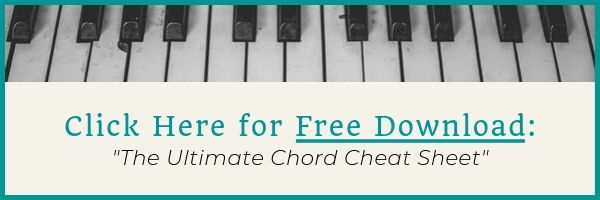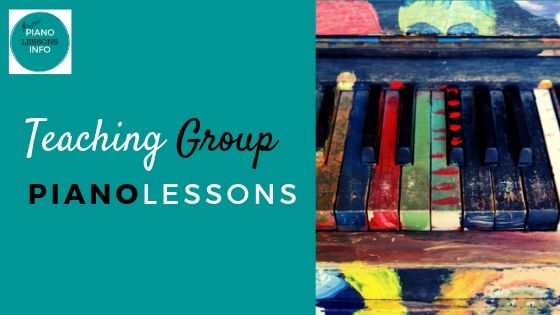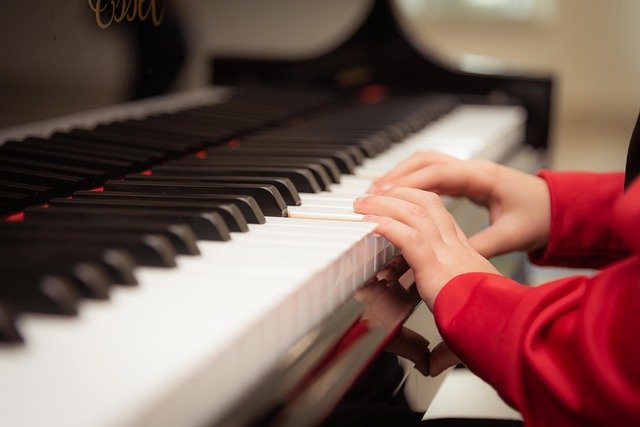Teach Children Piano:
Tips and Techniques
It can be awesome or really hard to teach children piano - as well as points in between the two.
I've developed some ways to teaching kids piano that help my lessons stay positive, engaging and keep me from losing my patience!
Kids may really want to be able to play the piano but their attention spans are a bit on the shorter side, they lack filters and have a lot of enthusiasm. It sure makes a lesson interesting!
On this page, I’ll share with you some of the things I’ve learned that have helped me to teach children piano. Teaching piano can be really fun and rewarding. To help piano teaching to be as great for you, I’ll give both some practical advice and some general guidelines.
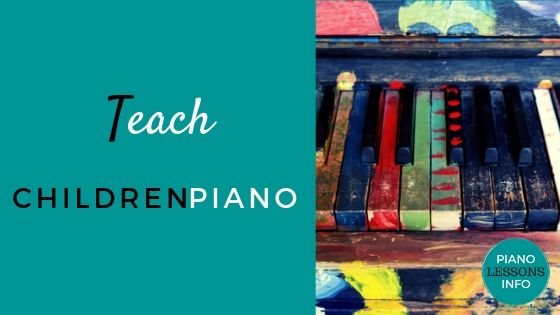
Choose Your Teaching Methodology
There are a few different ways to teach piano and I'd suggest teaching according to the way you were taught - especially if you thought it was good.
One of the main differences that come up is the the Suzuki method vs the traditional method. Or learning to teach kids to read notes called "A B C" vs "Do Re Mi".
If you're unsure, what you think is the best approach, head to a music store and have a good look through the beginner piano books. Then choose one most inline with how you'd like to teach.
No system is perfect, so keep that in mind. I use the Alfred books and musical alphabet. One of the issues I have with this is that kids can tend to rely on finger numbers over learning notes. However, understanding this, I can push learning notes in the theory sections of the lesson.
The Up and Down Technique
There is one main rule I try to use in every lesson with kids and that's my "up and down" technique.
What this means basically is that lessons aren't all based sitting at the piano. Sit down, then stand up. And repeat.
I always start out a lesson playing the songs learned from last week and moving onto the new material. After this, I try and include an activity that would get kids to do something different.
Examples of Standing Up Activities:
- using rhythm sticks on the spot or marching in the room
- jumping on the lines and spaces on a large staff on the floor
- drawing on a whiteboard - new notes for example
What A Kids Piano Lesson Looks Like
This is the general outline of what piano lessons look like in my studio.
30 Minute Lesson Outline
- Have a quick chat - non-piano related.
- Quick chat about how practicing went over the week and if they had any difficulties.
- Warm up - if advanced enough - using scales, triads, etc.
- Play through (and correct) pieces they practiced over the week.
- Learn new concept - this could include some standing up activities.
- Learn new songs - at the piano.
- Review and cement new concepts.
- Depending the student, do something fun like improv, learn a few chords or do some ear training.
My Must HaveTeaching Materials
Whiteboard
To teach children (and adults for that matter) piano, what I have found most helpful is a whiteboard. With a whiteboard, you can create lots of different activities. You can practice naming notes, rhythm, and other things.
You can have a big one on the wall but a smaller one you can use right at the piano is more important. Different coloured whiteboard markers (Amazon link) are also great. Don't forget an eraser too!
This is a good sized whiteboard (on Amazon).
Rhythm Instruments
Along with a white board, I also used rhythm sticks and other rhythm instruments to practice rhythm. It’s good for kids to move around and I’ve found it especially helpful for the students playing.
I have a few different types of rhythm sticks but my favourites are a similar to these rhythm sticks on Amazon. They have a crisp sound.
Kids do tend to like different coloured rhythm sticks as well. Bells can also be good - especially if you are teaching more than one student at a time. (A bit easier on the ears!)
Magentic Staff
An other of the materials I always have close by is a staff that is magnetic. There is so much you can do with this and it works well for adults and kids.
Use a magnetic staff for things like learning notes, scales, intervals, chords, you name it. It's very versatile.
When I first got mine there wasn't a whiteboard option but now you can get a magnetic, white board staff and it's really handy. (It can be time-consuming and a bit annoying to always have to draw lines. Plus, they're never straight!)
This whiteboard musical staff whiteboard on Amazon is similar.
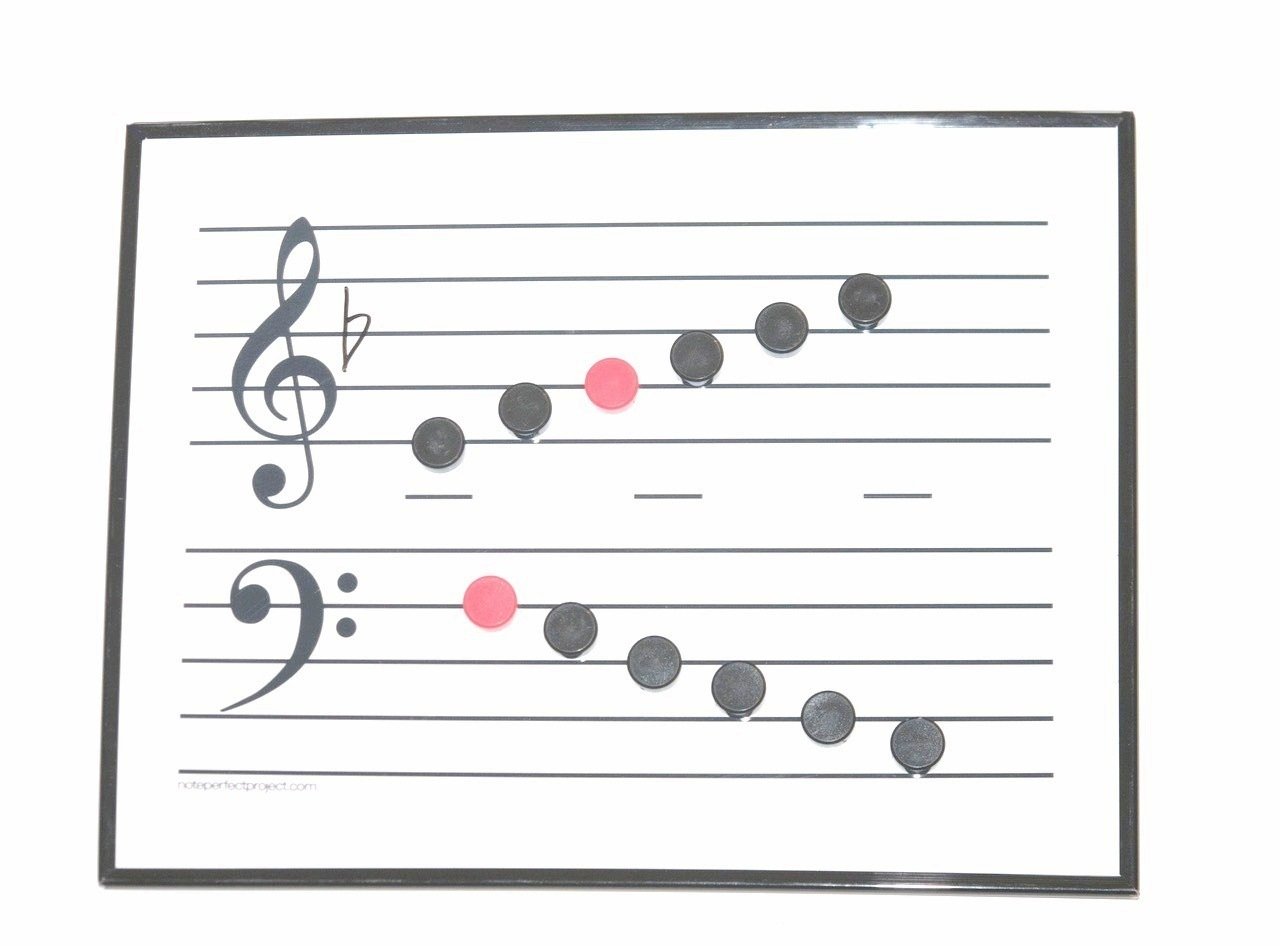 Awesome Piano Teaching Tool - Magentic Staff Whiteboard
Awesome Piano Teaching Tool - Magentic Staff WhiteboardKeeping Your Studio, Students & Lesson Times Organized
One of the things you really need to keep track of when you teach children piano is payments, missed lessons, and lesson times.
A simple spreadsheet can do this until however, there are tools out there to help you if you grow a larger studio. I have more on this on the more teaching beginner piano lessons page.
Best Piano Books To Use
To teach children piano, it’s good to have an idea of what piano books are good. Parents will always ask you about books and it's important to have a plan in mind.
My favourite piano books to teach with have been the Alfred series and more recently the Piano Adventures Series. I always try to use a lesson book and a theory book. The theory books make a huge difference!
Children will show up to their lessons with all sorts of books. You can choose if you want to use these or have them start in the books you prefer. I usually continue in the books they have and then switch them over to something different when they finish those books.
Dealing With Individual Differences
I've found that to effectively teach children piano, it's important to remember that every child is different.
I know that you know this but it’s easy to develop a method of teaching and focus on that instead of the individual student.
I have found that students have different strengths and focusing on those creates a good lesson. When you build on a child’s strengths, they come to believe that they can do it – piano is not so difficult. Then, when introducing those things that they struggle with, they already have a feeling of accomplishment and success.
Here’s a practical way to do this. Start and end the lesson with something they like or something not too difficult. If you know that they like scales and like to play them, end with playing some scales. They’ll leave feeling like they learned and can play something.
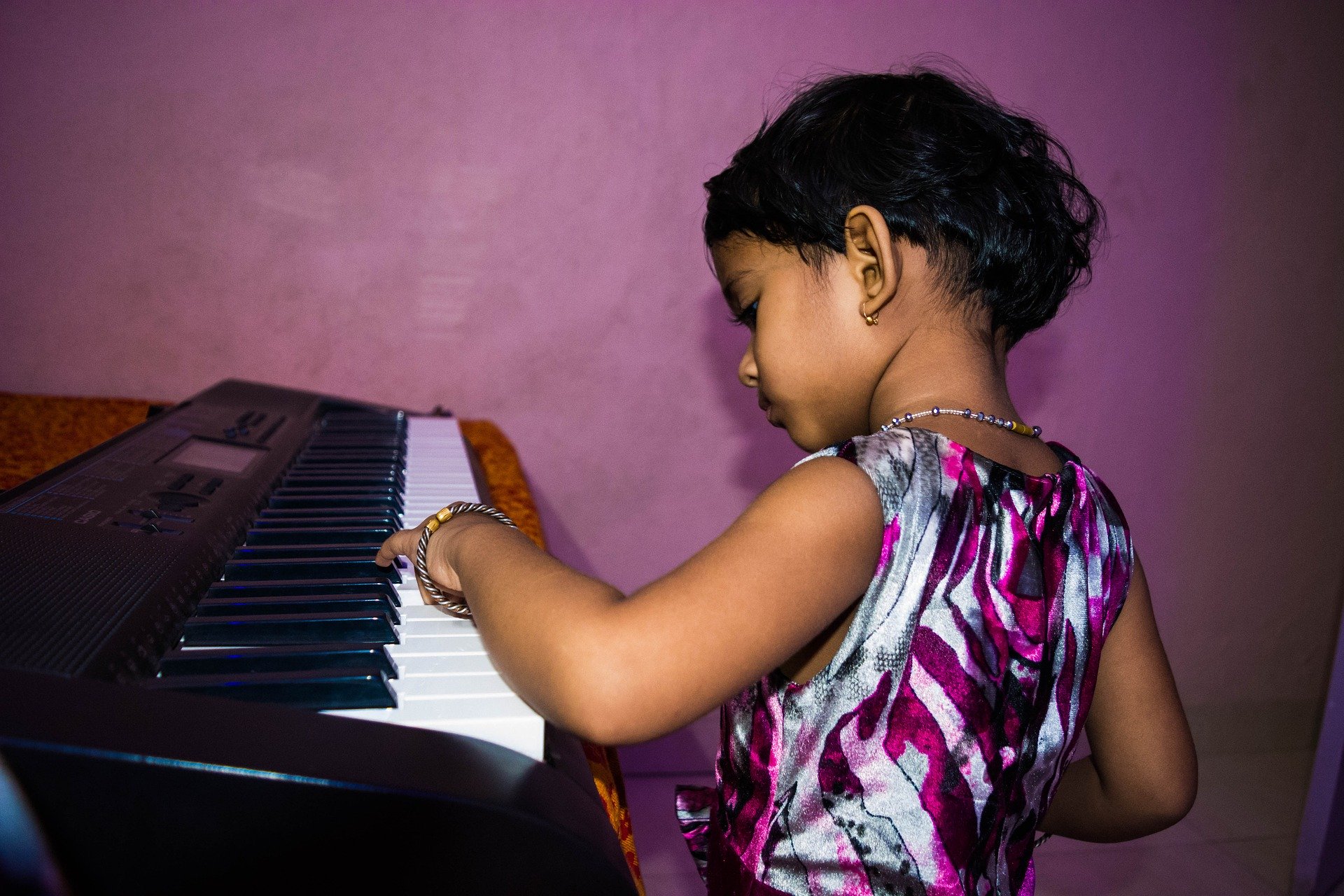
Attitude (Of The Teacher)
To teach children piano, there is another thing I have found essential. This is not about the actual teaching or the piano student, but about me – the teacher. It’s important to have a sense of fun.
If you enjoy teaching, that comes across to the student. If you’re having fun, they’re much more likely to have fun. We need to get away from that image of the piano teacher with the ruler in her hands rapping the knuckles! Piano is fun!
Managing Student's Behaviour
There are times for fun but unfortunately, there are some times when you need to be strict. Try to do this with a smile and the attitude of helping (rather than punishing). Some parents will tell you to be stern or strict with their child. They know their child and it is good to follow their advice.
Behaviour problems do happen in piano lessons although I have found not frequently. Children are usually respectful and nice.
I usually find that if a student is not behaving well, they are bored. If this happens, I try to mix things up. For example, if we are sitting at the piano, I try to come up with an activity that is more active. Then after that is finished, we try to go back to what we were doing.
If you have an issue you cannot handle in the lesson, talk to the parent. Find a way for the two of you to resolve it. If things are really a problem to the extent where you can’t get anything done in the lesson, I have one extreme solution. Ask the parent to come to the lesson. If the parent really wants the child to learn to play the piano, they will need to be there to help control the child. I’ve never had to do this. It’s just one option in extreme cases.
Teaching Different Age Groups
There a definite differences that come up with different ages.
Little ones: I don't usually teach kids under 6. This is because they find it too hard and quit before they are really able to give it a chance. However, if you like to do little games, songs and activities that are more music focused rather than learning piano specifically, you could do that at this time.
Ages 6-8: This age is great to teach piano to. I started myself at age 7. They need parents support for practicing and don't move through the piano learning material quite as quickly. This is also where you will need behaviour-management strategies the most. Many learn at this age and it goes well.
Ages 9-11: I love teaching this age group as they tend to really get it. There can be challenges with practice and parents less involved in enforcing it, so keep that in mind. They often are learning because they want to and have good attitudes.
You'll find that parents of kids are really consistent regarding showing up to piano lessons. Often, the only reason for a missed lesson is sickness. So for a consistent income and business base, kids are really great. Just note they won't come during school holidays for the most part.
Teens: If a teen wants to learn piano that is great and they can move through their material really quickly. I usually give them adult piano books and also teach then chords. Teens can have busier schedules and exams that get in the way of lessons so there are sometimes more cancellations with this age group.
Should Parents Come to Lessons?
I have taught piano in two different countries (Canada and Australia) and I've definitely found a difference between the two. In Canada, parents never came to a piano lesson. It was always "drop and run".
In Australia, things have been a bit the opposite. Parents often come to lessons. I have generally found this positive. Kids tend to behave a little bit better when their parents are in the room. It can make things easier.
But should they come to the lesson? I'd say no unless they're really little - like 5 and under (which isn't really great for teaching anyway).
More Info on Teaching Children Piano:
I have a number of different pages on my tips for teaching piano.
If you’d like some more information on teaching group lessons, go to teaching group lessons.
You can see what my typical lesson outline at how to give piano lessons.
And if you want to know more about teaching beginners specifically, check out teaching beginner piano lessons.
I hope this was helpful for you and you're ready to go and teach children piano!
Teach Children Piano FAQ
When is the right age to start teaching children piano?
When is the right age to start teaching children piano?
The ideal starting age can vary, but many children begin around 5 to 7 years old. I prefer to teach children piano at 6 and up. It's essential to consider the child's interest, attention span, and ability to read letters and numbers when deciding.
How do I make the first piano lesson enjoyable for a young child?
How do I make the first piano lesson enjoyable for a young child?
Start with engaging activities like exploring the keyboard, playing simple melodies, and using colorful materials. Keep the lesson short and interactive to maintain their interest.
How can I help children focus during lessons?
How can I help children focus during lessons?
Break lessons into short segments and switch between activities. Incorporate movement, rhythm games, and rewards to maintain their attention and make learning fun.
How do I manage children's frustration when they find a piece challenging?
How do I manage children's frustration when they find a piece challenging?
Teach them patience and resilience. Break the piece into smaller sections, one hand at a time, slow it down, offer praise for effort, and encourage them to practice slowly and steadily.
What role can parents play in their child's piano learning journey?
What role can parents play in their child's piano learning journey?
Encourage parents to provide a supportive environment at home, help with practice routines, attend lessons, and celebrate milestones with their child.
How can I incorporate music theory into lessons without overwhelming them?
How can I incorporate music theory into lessons without overwhelming them?
Integrate basic theory concepts naturally into lessons. Use games, stickers, and interactive activities to teach note names, rhythm, and simple musical terms.
What should I do if a child loses interest in piano lessons?
What should I do if a child loses interest in piano lessons?
Explore their interests and incorporate related songs or activities. Maintain a flexible approach while keeping the lessons engaging and enjoyable.
How can I make recitals and performances enjoyable for young students?
How can I make recitals and performances enjoyable for young students?
Prepare students with mock performances during lessons. Keep recitals relaxed and supportive, allowing them to showcase their progress in a positive setting.
How can I handle different learning paces among young students?
How can I handle different learning paces among young students?
Tailor lessons to each child's pace. Offer challenging material for fast learners and extra support for those who need it. Use positive reinforcement to motivate progress.
Recent Articles
-
Piano Notes Chart
Nov 20, 23 10:21 PM
Find a piano notes chart for treble clef and bass clef notes as well as the different types of notes. -
D Chord on Piano + Diagram, How To & Theory
Oct 24, 23 12:20 AM
Learn how to play the D chord on piano with diagram, fingering, D/A, D/F# and a theory explainer. -
Diminished Piano Chords: Chart & How to Make Them
Oct 09, 23 09:23 PM
Learn the different diminished piano chords and how to make them. Here you'll find both a diminished chord chart and an explanation.



